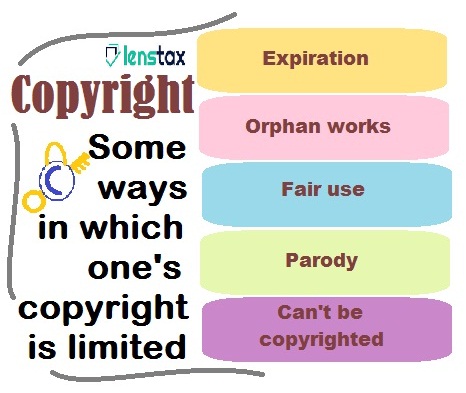Duration and Limitation of the rights provided by copyright
Updated on : 2020-Dec-11 17:17:22 | Author :
Contents
- Introduction
- Duration of the Copyright rights
- Limitation of the Copyright rights
The registration process of the copyright in India delivers economical rights to the creators of the materials including art, music, literature, sound recordings, films, broadcasts. Copyrights also provide salient moral rights so that people can be recognized as the creator of those materials. These are meant to object to its distortion. The copyright does not give protection to the names or titles or any ideas. The copyright act makes the registrants earn the economic rewards for the efforts they have given towards it and at the same time help to encourage and inspire future creativity and to develop materials. This kind of protection is generally automatic after the recording in the material form that is created.
Duration and Limitation of the rights provided by copyright
Duration of the Copyright rights
As per the general rule, the copyright lasts up to 60 years. These 60 years is counted from the year following the death of the author for works like original literacy or drama or musical works or artistic works.
Limitation of the Copyright rights
Despite providing various critical and powerful rights to the creators over their created works, these rights are not unlimited. It creates a balance between the rights of the copyright holder and the good of public provisions in the law.

Expiration
One of the most important limitations of the copyright is that it gets expired after a specific period. A work falls into the public domain after the copyright gets expired. In this condition the work is considered as a part of the cultural heritage hence it is not subjected to any copyright limitation. For the corporate authorship- works the period is 95 years from the date of publ9ication and 12o years from the date of the creation of the work.
Orphan works
There is no way to reuse copyright protection. The orphan works can be used for commercial works as well as non-commercial works. While it is not designed to place any new limitations on any owner’s copyright i.e. normal copyright protection gets resumed when the copyright holder reemerges, it means that one can lose several key elements of copyright protection if that person cannot be determined to be the copyright holder of the created work or cannot be located.
Fair use
It is the best-known limitation to one’s copyright. At the same time, it is the least clear too. There is no specific rule that defines what is fair use and what is not fair use. Fair use can be defined by a framework that is applied on a case-by-case basis. Whether for use or not a use is “fair” can only be put on effectiveness is determined by a court.
Parody
Parody is a set of the limitation of fair use. It protects the use of a work that is copyrighted work to protect poke fun. Fair use favors the parody to make fun of the work itself. All the claims of fair use under the parody law are subject to the ordinary fair use tests.
Can’t be copyright
Many things cannot be copyrighted. It may include titles or facts or ideas or phrases or other items that are too short to have a unique value.
To know more visit Copyright


